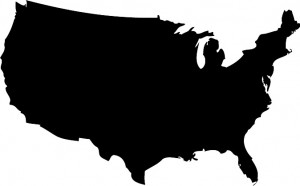Center for American Progress
Issues » Energy and Environment
State Future Funds
Jumpstarting Investments in Low-Carbon and Resilient Energy and Transportation Infrastructure
By Cathleen Kelly | Tuesday, June 23, 2015
Ask 50 governors or 100 mayors or 1,000 city council members to name their biggest challenges in serving their constituents and it’s a safe bet that a lack of money will top the list. Across the country, state and local leaders face budget shortfalls that, in some cases, are preventing them from accomplishing even the most basic tasks, from repairing roads, to training first responders, adequately maintaining schools, and providing critical social services.
The need to upgrade the nation’s infrastructure looms large. In 2013, the American Society of Civil Engineers gave America’s aging energy and public transit infrastructure grades of D+ and D, respectively. In the nation’s first-ever Quadrennial Energy Review, or QER, released in April 2015, federal energy experts highlight the growing vulnerability of the nation’s electrical grid to extreme weather and terrorist threats and the need for public and private investment to modernize the country’s energy infrastructure. The QER authors assert that upgrading the U.S. electrical grid—including grid storage, transmission, and power system operations—would allow for better integration of renewable energy into the national energy mix, reduce carbon pollution, help curb climate change, improve air quality and public health, and increase the reliability of electricity delivery in the face of more extreme weather. In addition, increasing the use of microgrids, or localized grids—which can be disconnected from the traditional grid to operate autonomously—and the use of distributed generation—or power generated at the point of use—can help communities keep the lights on when the larger system goes down in a storm or is otherwise disrupted. Microgrids and distributed generation that use renewable energy, such as wind and solar, can help to improve energy system reliability while also reducing carbon pollution and improving air quality.
Similarly, expanding public transit services—including metros and subways, buses, passenger trains, trams, and other light rail—would help to provide public transportation options to the roughly 45 percent of American households that lack access to public transit and the millions more who are making do with inadequate transit services. Public transit systems and bike and walking paths improve mobility, which in turn expands access to jobs. It also increases transportation options that are important not only for everyday needs such as traveling to and from work or school, but are also critical in times of emergency, particularly in terms of getting people to safety before extreme weather hits. Moreover, by taking cars off the road and reducing traffic congestion, public transit and bike and pedestrian paths improve air quality and public health.
For all of the above reasons, state and local leaders have asked the federal government for a financial and technical boost to build low-carbon and resilient energy and public transportation infrastructure. President Barack Obama made a positive step in that direction in November 2013 when he established the State, Local and Tribal Leaders Task Force on Climate Preparedness and Resilience to advise the federal government on how to strengthen community resilience to extreme weather and climate change. In response to its charge, the task force has recommended federal support for planning and investments in climate resilient, efficient, and low-carbon transportation and energy systems. Congress could answer the call to support state and community-based preparedness and climate change mitigation efforts by replicating existing state loan programs that have successfully helped states preserve the nation’s waters for recreational use and, since the mid 1990s, deliver safe drinking water for 95 percent of Americans. Those loan programs—specifically, the Clean Water State Revolving Fund and the Drinking Water State Revolving Fund—were created and capitalized by Congress.
Today, federal lawmakers can similarly partner with states and localities to address pressing energy and transportation infrastructure needs by establishing what CAP calls State Future Funds—proposed new revolving loan funds designed to supplement state and local government resources. State Future Funds would help states and localities cut carbon pollution and improve community resilience to extreme weather events, which are increasing in number and severity, along with other associated shocks.
As envisioned, State Future Funds would combine federal resources with state, local, and private sector dollars to expand investments in low-carbon and resilient energy and transportation infrastructure, including in low-income and tribal communities. State Future Funds would offer a host of benefits, including improving public health and air quality, reducing traffic congestion and climate change risks, and increasing community access to good jobs, schools, and other valuable outcomes. In addition, State Future Funds would help states comply with the U.S. Environmental Protection Agency’s, or EPA’s, proposed Clean Power Plan, which calls on states to reduce reliance on fossil fuels and increase their use of clean energy.
Ideally, State Future Funds would have the following design features:
- Deploying funds: State Future Funds would give states new resources to offer low-interest or interest-free loans and to provide loan guarantees in order to support low-carbon and resilient energy and transportation infrastructure projects and planning.
- Developing investment plans designed with meaningful stakeholder engagement: States would prepare annual investment plans based on meaningful engagement with local leaders, the public, and stakeholders, including low-income communities and tribes.
- Assisting low-income communities and American Indian tribes: Similar to the Safe Drinking Water Act, each state would be required to invest 30 percent of its annual State Future Fund capitalization grant in low-income areas. In addition, each state would be required to invest 2 percent of its annual State Future Fund capitalization grant in American Indian and Alaska Native villages that have not otherwise received State Future Fund grants. If needed, states could offer low-income communities longer loan payback periods. States could also provide technical and financial assistance to build needed capacity to support low-carbon and resilient transportation and energy infrastructure in low-income areas, including energy efficiency improvements.
- Sharing the cost: Each state would be required to contribute to its State Future Fund at least 20 percent of the total capitalization grant made to the state.
States could use State Future Funds to support a wide range of low-carbon and resilient energy and transportation projects. For example, states could provide low-interest loans for smart grids, distributed renewable energy, microgrids, large-scale renewable energy generation facilities, and residential and commercial energy efficiency programs, including in low-income areas. To provide more sustainable and resilient transportation options, State Future Funds could provide loans for bus acquisition to help expand bus service, reduce flood and other extreme weather risks to existing public transit systems, and expand bike and pedestrian paths. States could also use State Future Fund resources to support long-term planning for low-carbon and resilient transportation and energy infrastructure and for job training. States could also support challenge grants or prizes to spark innovative infrastructure designs. Additional State Future Fund design features are offered in the report.
The reality is that state and local governments—and communities—are on the front lines when it comes to coping with crumbling and outdated infrastructure, traffic congestion, air pollution, more extreme weather driven by climate change, and growing inequities. Congress has the power to provide state and local officials with a remedy to the pressing on-the-ground challenges they confront daily. Specifically, by creating State Future Funds, Congress can support state and local efforts to build low-carbon and resilient infrastructure, strengthen communities and grow opportunities for all to prosper.
Cathleen Kelly is a Senior Fellow at American Progress.
"The American Society of Civil Engineers gave America’s aging energy and public transit infrastructure grades of D+ and D."
"Roughly 45 percent
of American households lack access to public transit and millions more are making do with inadequate transit services."
Citizens Taking Action for advancement of public transit and passenger trains

